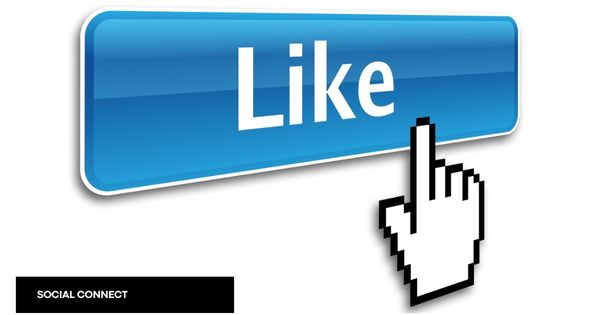Facebook Like Button: A Historical Perspective – The Facebook Like Button is arguably the most iconic and instantly recognizable feature in the history of social media. Since its inception back in 2009, it had changed the way people used to interact with content on the web. Now, that little, simple button gave them the chance to express their approval, affection, or agreement with any post, photo, video, or comment, in fact—anything—with just a single click.
But it is in how the Like button came to be, and what its impact has been on the digital world, that a tale forces a revisit.
The Idea Behind the Like Button
The Like button was not an idea at the beginning of designing Facebook. In fact, when Facebook went live in 2004, it was a very different platform from what it is today. There was no News Feed, no sharing buttons, and naturally, no Like button. In its early days, Facebook was a thoroughly social networking site targeted toward college kids where the users would create some profiles, list down their interests, and connect with friends.
By 2007, Facebook introduced the News Feed, which would change how people consumed on it. The News Feed would show updates from friends and Pages in chronological order, but still, there wasn’t a fast and easy way to show appreciation for a post without leaving a comment. This is when the Facebook design team began brainstorming on how to make the experience of using the app feel much more engaging and interactive.
The Like button at Facebook was developed by a small team of engineers and designers. Originally, that button was going to be called the “Awesome” button, until the team ultimately decided that “Like” was better, as it made for a more universal, less intense expression of positivity. The goal was to provide a lightweight, low-effort way for users to engage with content for those who might not have the time or even the inkling to leave a comment.
Launching the Like Button
On February 9, 2009, Facebook revealed the official Like button. It was just a tiny icon, showing a thumbs-up displayed next to each and every post on the site for the convenience of users to react. Instantly, the Like button performed quite well. In just weeks from its launch, millions of users clicked the Like button daily, and it became an integral part of the Facebook experience.
This was not the only success of the Like button; soon after its introduction, other social media sites and websites introduced their own Like button or some other tool aimed at engaging users. Twitter introduced the “Favorite” button, also morphing into a heart icon, Instagram implemented its own form of the Like feature, and even YouTube and LinkedIn introduced similar mechanisms that let user interactions become encouraged in their own ways.
How the Like Button Affects Social Media
The Like button changed everything. It changed how people fundamentally interacted with each other on social media platforms, creating a new form of social currency in which the number of likes a post got was some metric of whether or not something was popular—or successful. It would change how people would post content, with users sharing these things that were specifically designed to garner likes, such as funny memes, viral videos, or quotes of inspiration. However, the thumb-up button also had several deleterious effects. As usage of that feature became more embedded into social media culture, it gave rise to the “like economy” in which users—especially networks—started elbowing for likes, a measure of one’s visibility and perceived success. This has subsequently evoked concern over social media’s impact on mental health, as people have become overly focused on receiving “likes” and online validation. Despite such concerns, it remains one of the central features of Facebook today, as well as most other platforms. Over the following years, Facebook would expand upon its English engagement options with the addition of 2016’s reactions, enabling users to convey a wider range of emotions that could express everything from loving to angry and even sad. But the original Like button has remained the most used and iconic digital expression of engagement.
Conclusion
While the Like button on Facebook may seem quite inconspicuous, its importance in the impact it has on the world of the Internet is immense. From its humble beginnings in allowing people an easy way to Like a post to its original inclusion, shaping online behaviors and influencing the greater social media landscape, the Like button became synonymous with the culture of the Internet. As social media continues to change and evolve, it can rest assured that its legacy as one of the most influencing tools in the history of the web is secure.


